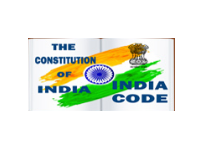Recommendations relating to Promotions
9.1 On the general principles for promotion, the Group recommends that at junior levels of the AIS, when officers are in the formative years of their service careers, they should be guided, counseled, and trained to help them realize their full potential. Promotions should be assured to them, subject to generally satisfactory performance , and may be on a time-scale basis. However, as the officer grows in service and is to be considered for positions dealing with policy and program formulation and implementation, there should be deeper selection and only those who can demonstrate a creditable record of actual performance, and possess the necessary knowledge and skills required for holding such responsible posts, should be promoted. Promotion norms should be more stringent than at present and based explicitly on competition rather than on simple attainment of a-priori benchmarks. A clear signal should be conveyed to the officers that unless they perform well and improve their professional knowledge and skills, they would not be promoted.
9.2 This would be in line with the practice followed in most advanced countries, where promotions are neither automatic, nor based on a-priori benchmarks. Every one has to strive hard to earn them. For example, in the UK a system has been introduced whereby all posts are advertised internally within the department. Officers have to apply, and compete for higher positions on merit. . Those not selected are superceded. The practice in multilateral development banks (MDBs) is similar, except that the positions are, in principle, open to all staff working in the institution, and not confined to particular department. In Australia and New Zealand, where major reforms have been introduced in the civil services, all posts are required to be openly advertised (unlike in UK/Multilateral Development Banks where they are only advertised internally). Selections are made competitively on merit alone from out of the applications received. In determining merit, the demonstrated competence to hold the higher position carries considerable weight[1]. Candidates who have relevant professional academic qualifications to demonstrate their competence for policy making positions have a definite edge in selections. This clearly indicates the importance attached to acquisition of relevant skills for senior level appointments where an officer is required to formulate programs and develop policies that place at stake the interests of an entire nation or a whole state.
9.3 While there is clear merit in a rigorous, competitive selection process for promotion to high level positions, a word of caution is essential. It is essential that the selection process be fully insulated from unstructured influences and there must not be any doubt in respect of its integrity. A set of fair and transparent criteria have, therefore, to be developed and employed for selection for higher positions.
9.4 Yet another factor to be borne in mind is that officers who have been superceded are often frustrated elements within the system and can be a serious nuisance. They can impede the smooth functioning of the organization by giving vent to their frustration in various ways. It is, therefore, essential that dignified methods of persuading them to leave the system should be found, either through reasonably attractive compensation packages or by finding placements for them outside the policy-making structure. Consistently poor performers should be weeded out and procedures for such weeding out should be streamlined[2].
9.5 Another consideration in redesigning the system of selections to higher positions is that officers must be evaluated not only on their performance in the feeder (lower) positions, but also in respect of their level of preparation by way of acquiring the necessary skills and knowledge for the higher level positions.
9.6 A final consideration is that the practice of “promotion without competition”, i.e. automatic promotion in order of seniority subject to meeting (typically modest) a-priori benchmarks of performance, which has led to complacency among officers, must be firmly eschewed.
9.7 The recommendations of the Group are, therefore, based on the above principles. The Group addressed the following issues:
- The composition of the Screening Committee to ensure that it is not susceptible to unstructured influences.
- Models for the process of selection for higher positions to ensure consideration of performance in the lower positions and acquisition of knowledge and skills for higher positions, and competition..
9.8 Composition of the Screening Committee
9.8.1 With a view to enhancing the credibility and impartiality of the Screening Committee, involvement of a senior officer from outside the cadre is recommended. The composition of the Screening Committee may, therefore, be the following:
| For the level of | Current composition | Recommended composition |
|---|---|---|
| Super Time Scale |
|
|
| Principal Secretary Grade |
|
|
| Chief Secretary |
|
|
9.9 Models for promotion
9.9.1 The following two models may be considered for the process of promotions to super-time scale and above. Both models are based on the
9.9.2 principle of merit cum seniority, with the zone of consideration taken as (1.5 n + 2)[3] officers, rounded off to the next higher integer (n = number of anticipated vacancies).
9.9.2 The difference between the two models lies in the assessment parameters and basis for evaluation, as explained below:
Model A
9.9.3 In this model the criteria and process for selection for the higher positions may be the following:
- Satisfactory completion of all the required training programs (including approved substitutes) for the higher positions
- Evaluation of performance appraisal reports of the last 10 years, which should be moderated to ensure consistency between[4]:
- The overall grading secured
- The assessment against work performance
- The assessment against different attributes
- The pen picture of the officer
- The evaluation of the PARs should yield a single score on a 10 point scale (the higher the better) for each candidate officer. This may be the mode or preferably the median, but not the average, of the moderated scores, as evaluated above.
- Candidate officers may be identified for selection, starting with the officers attaining the highest score, and moving down, until the number of anticipated vacancies is (just) reached.
- The merit list of officers may then be arranged in their order of inter-se seniority for promotions in turn against vacancies.
- The cases of such officers who are not included in the merit list in a given year may be reconsidered after a period of two years, i.e. after two more annual PARs have been added to their dossiers, and they have qualified in the required career courses (if not done earlier). The case of each officer may be considered three times in all (once as a fresh case and twice under reconsideration). After three unsuccessful attempts, the officer need not be considered for promotion any further. (For promotions to the grade of Chief Secretary in the States cases would be reconsidered in each subsequent year, i.e. after one year’s PAR has been added to their dossier.
Model – B
9.9.4 In this model, a greater emphasis is placed on acquisition of necessary skills for the higher positions than in the case of Model A.
The following evaluation criteria, with corresponding weight for each, may be adopted:
- An evaluation of the officer from his performance appraisal reports (including performance in positions outside the Indian Governmental system), for the last 10 years - weight of 50%
- “Richness of work experience”, as determined from his entire service record - weight of 20%
- Evaluation of significant achievements or failures (“critical events”) in his entire service period - weight of 5%
- Acquisition of formal professional skills for the higher positions - weight of 25%
9.9.5 The evaluation from the performance appraisal reports would primarily be an assessment made from his overall grades and the ratings against the work output, different attributes, remarks from the pen picture, etc. as for Model A. The richness of work experience would be an assessment of the job content of his previous assignments that would contribute towards his ability to perform in the higher position by way of experience based skills and knowledge. This would involve the substance of job content (i.e. discounting for purely staff jobs, enhanced weightage to substantive field or secretariat positions), sufficient but not excessive diversity of job content (i.e. avoidance of long-periods spent in a single sector or type of position, or insufficient time spent in a large number of different sectors), as well as sufficient focus on particular sectors (e.g. education, tribal welfare, public finance [IAS]), or roles (e.g. crime detection, intelligence, security [IPS]; silviculture, wildlife management [IFoS]). The significant achievements or failures (“critical events”) would primarily relate to out-of-the-ordinary positive or negative achievements, which may also have been recognized through rewards or penalties from the relevant authorities or agencies.[5] The assessment of skills for the higher assignments would be based on his successful efforts at improving his relevant formal professional qualifications, including career training, other relevant study/training programs, including those pursued during study leave, and his portfolio of published research, all of which would be reflected in his CV. Actual performance in these efforts and not simply the fact of successful completion, would be taken into account. The weights proposed for the different criteria of evaluating merit reflect equal consideration to performance in the lower grade and extent of preparation for higher level responsibilities. 75% of the total weight arises from information available in the PARs.
9.9.6 As in case of Model A, officers who are not selected in the first attempt, may be re-considered upto twice more, provided that they have earned at least two year’s PARs in the interim for super-time and Principal Secretary scales, and at least one year’s PAR for higher levels and/or enhanced their relevant formal qualifications.
9.10 Analysis of the models
9.10.1 Both the models presented above have their respective advantages and disadvantages. While Model A has the disadvantage that it may not yield a select list of the most qualified officers, on account of being based entirely on performance at the lower level as reflected in the PARs, except for the requirement of qualifying in prescribed career courses, it has the advantage of being simple to implement. On the other hand, Model B has the advantage of ensuring that the better qualified officers are selected, thus furnishing clear signals to the officers that they must perform well, enhance their qualifications, and plan their careers, if they aspire to higher positions.
9.10.1 The Group felt that for promotions in the State to the super time scale, Model A may be adopted. However, for the scales of Principal Secretary and Chief Secretary, Model B would be more appropriate.
9.10.2 This system of promotion that may be adopted at the different functional levels in respect of the different All India Services, is, accordingly, as follows:
| Functional level | IAS | IPS | IFoS | Model |
|---|---|---|---|---|
| Super-time scale | Commissioner | Inspector General of Police | Chief Conservator of Forests | A |
| Principal Secretary Grade | Principal Secretary | Additional Director General of Police | Additional Principal Chief Conservator of Forest | B |
| Chief Secretary Grade | Chief Secretary | Director General of Police | Principal Chief Conservator of Forest | B |
Phased introduction of the new system
9.10.3 The Group recognized that the proposed system cannot be introduced immediately as time would have to be given for officers to take necessary action to upgrade themselves and for the requisite training programs to be put in place. Hence, in all cases where Model A is to be adopted for promotions, the Group recommends that a period of three years be allowed before the new system is enforced. Where, Model B is to used, a phased process of implementation may be introduced so that officers may have reasonable time to prepare for the new system. The weights for different aspects, during this transition period, may be as follows:
| Evaluation of PARs (subject to satisfactory completion of required courses) | Richness of work experience | Evaluation of significant achievements | Demonstrated skill for higher assignment | |
|---|---|---|---|---|
| Year 0 | 100% | NIL | NIL | NIL |
| Year 1 | 100% | NIL | NIL | NIL |
| Year 2 | 100% | NIL | NIL | NIL |
| Year 3 | 80% | 10% | NIL | 10% |
| Year 4 | 80% | 10% | NIL | 10% |
| Year 5 | 50% | 20% | 5% | 25% |
9.11 Screening deadwood
9.11.1 There is no benefit in retaining in service officers who lack demonstrated competence, or who are unqualified, or of doubtful moral or financial integrity or who are in unacceptably poor health. It is, accordingly, important that an effective system of screening such officers be put in place. Provisions already exist for the compulsory retirement of those who have completed 50 years of age or 30 years of service[6]. However, this provision has been utilized only very rarely so far. The only occasion when it was used significantly was during the Internal Emergency of 1975-77. On that occasion, while a number of officers of different services were compulsorily retired, almost all were reinstated, following interventions by the Courts. In light of the past experience, procedures have been laid down for operating this provision.
9.11.2 The group felt that owing to the revealed practical difficulties or reluctance on the part of cadre controlling authorities in operating this provision, a supplementary mechanism may be put in place to persuade officers to leave the service at a stage when they may still have some career prospects outside the Government.[7] However, two notes of caution are in order. First, the screening should be by an independent mechanism and transparent process. Second, after identification of the officers proposed for separation, they should be induced to retire through a voluntary separation scheme, as opposed to mandatory termination or retirement.
9.11.3 In order to implement the system, the Group recommends that a Standing Committee be set up under the Cabinet Secretary, which should, by a given date each year, review the records of all officers who have reached the age of 50 years, or have completed 20 years of service, in the past year.[8] These records would comprise the Performance Appraisal Reports, report of performance in specified career courses, results of vigilance enquiries, in personam court proceedings, and disciplinary proceedings faced by the officer in his/her career. It would also include a statement of pending proceedings in each of these categories. The objectives of this review would be to identify those who have only a low possibility of further promotions and need to be screened out.
9.11.4 The following norms may be adopted for identifying the officers to be screened out:
- An officer who has failed to make the select list for promotion to the next higher grade 3 times.
- An officer who has encountered 3 proceedings resulting from vigilance enquiries (i.e. major disciplinary proceeding, or criminal proceeding in court) in respect of alleged lapses of moral or financial integrity in the course of his/her career, even if the officer is cleared on completion of the proceedings in each of these, as lack of moral or financial integrity would be considered as “highly probable” in such cases.
- An officer who has failed 3 times to qualify in the requisite career course(s) for his next promotion.
- An officer who is permanently medically unfit to perform the normal duties of the service, as revealed from the biennial medical examination
9.11.5 Officers screened out should be informed of the fact and advised that their chances of further advancement in their career are not bright. Further, that they may, if they wish, avail of a voluntary separation package (as already available to surplus staff). If they choose to remain in service, their cadre controlling authorities would be advised of the findings of the Standing Committee, so that the same may be appropriately taken into account in planning the future postings of the officer.
9.11.6 A second review may be carried out after a further period of five years, i.e. after the officer has completed 25 years of service or 55 years of age. If the performance of the officer does not show any marked improvement and the chances of further career advancement continue to be dim, the available provisions for compulsory retirement should be invoked.
9.12
Career Courses
9.12.1 The job profile of an AIS officer undergoes significant change as the officer moves from program implementation levels in the first few years of his career to program formulation and policy making levels in subsequent years. There is no guarantee that an officer who performs well in program implementation roles level would perform equally well in program/policy formulation roles. Unfortunately, despite this change in job profile, there is no system by which officers are imparted the requisite training to undertake the differentiated responsibilities at the higher levels. It is, therefore, essential that all services must specify career-training programs, which would be mandatory for promotion to different levels. These training programmes should aim to equip an officer with the necessary skills for the positions likely to be held in the next 9-10 years. Accordingly compulsory training programmes at suitably timed in-service levels would be necessary[9] so that the performance in these programmes could be taken into account for the next promotion.
9.12.2 These career-training programs should lead to significant enhancement of an officer’s skills and competence. Accordingly, they would need to be more rigorous and of significantly greater duration than the one/two week programs currently being offered to IAS officers. Performance in these programs must be evaluated in terms of the norms followed for professional training programs.
[1] This explains the large number of academic programs in Public Policy in several universities of UK, Australia and New Zealand.
[2] These issues are addressed later in the report.
[3] A larger zone of consideration may lead to an unacceptable rate of supersession, while a narrower range may not yield sufficient competition.
[4] Necessary adjustments may be made by the Screening Committee where the PARs are not in a consistent format, for example, the transition years during which ACRs (old format) and PARs (new format) are to e evaluated, or alternatively, the PARs relate to agencies outside the Indian governmental system. Adjustments may also be necessary where systematic biases in evaluations are noticed between different State cadres, or where a single Reporting/Reviewing officer has furnished the PAR of a particular officer an unusually large number of tijmes.
[5] Generally, but not invariably, these would be available in the PARs. Some exceptional achievements may not relate strictly to one’s official work, for example outstanding and nationally/internationally recognized literary and scientific work.
[6] As provided under FR 56(j) and Rule 16(3) of All India Services (Death-cum-Retirement Benefits) Rules, 1958
[7] At age 50, or 30 years of service, when they would have been promoted to senior positions, it is unlikely that they may be able or inclined to pursue a career outside the Government.
[8] Most officers, at the time of completing 20 years of service would be in their mid-forties, when there may still be reasonable prospects of making a career outside the Government
[9] As noted above, some mandatory training courses may be substituted by other formal training/academic programmes that may be pursued on Study Leave. There may also be a cafeteria of training courses, of which officers may choose a specified number. The cafeteria approach may help address differentiated backgrounds and career plans of officers.






 कार्मिक एवं प्रशिक्षण विभागDepartment of
कार्मिक एवं प्रशिक्षण विभागDepartment of 













